How to Use Chalked Paint

Last updated September 7, 2023
Chalked paint has many names, such as chalky paint or chalk-finish paint, but it doesn't actually contain chalk. These blends of matte-finish latex paint have a soft, chalky appearance that comes from a fine, granular powder such as plaster of Paris.
Chalked paint is a popular choice because of its color options, texture and easy application. It often requires fewer coats than other types of paint. It can be applied without sanding or priming ahead of time. This guide will show you how to use chalked paint to give furniture and other fixtures a new but weathered appearance.
Difficulty:
Beginner
Duration:
2-4 hours
Table of Contents
Prepare for Your DIY Project
Prepare the Surface
Apply the Chalked Paint
Sand as Necessary
Seal With Wax
Mixing Your Own Chalked Paint
Prepare for Your DIY Project
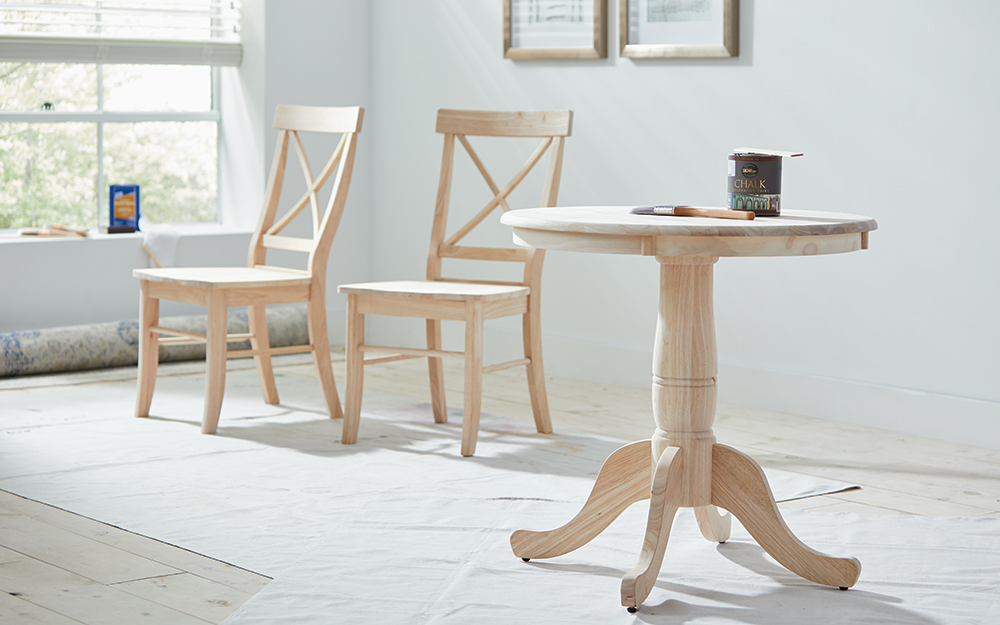
Chalk paint is easy to use on any wood, metal, glass, ceramic or laminate surface. It adheres best at room temperature.
- Choose an indoor room for your project space that is well-ventilated and free of dust.
- Put down a drop cloth to protect the floor from paint drips and sandpaper dust.
Prepare the Surface

Most surfaces don’t require stripping or sanding before you paint them with chalked paint. If the piece has old coats of paint, you can lightly sand anywhere you see paint drips or excessive build-up of paint.
Use a screwdriver to remove metal hardware such as handles or hinges. If the piece has drawers or shelves, remove them and paint them separately.
Wipe the piece with soapy water to remove any dirt, dust or oils on the surface. Too much water can cause wood to swell and change its texture, so just a light cleaning will do. If the piece has changed texture after wiping and you want it to be smooth, give it a light sanding with a sanding block . Use a damp cloth to remove the dust. Allow the piece to dry before you paint it.
Use painter’s tape to cover areas or fixtures you want to keep paint-free.
Apply the Chalked Paint
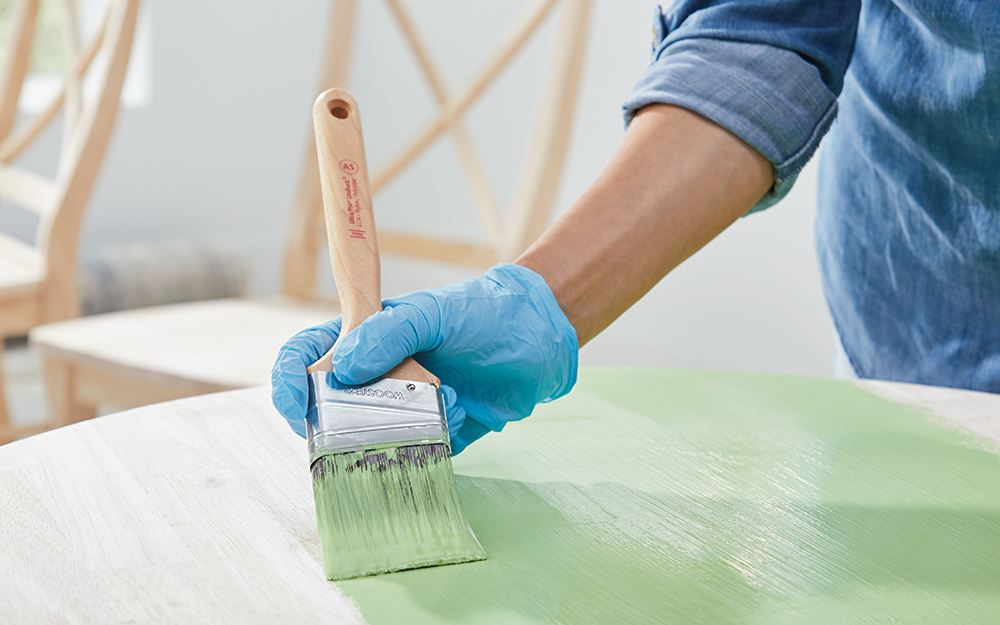
A good practice when starting any new project is to test the finish on the piece you’re working on. Apply a small amount of paint on a hidden part of your piece. Let it dry. If you like how it looks, continue with the next steps.
- Use a paintbrush to apply the chalked paint in thin layers.
- Use quick strokes in the same direction.
- The strokes can go with or against the grain.
- Allow the paint to dry following the manufacturer’s instructions. Chalked paint usually dries fairly quickly.
- You may need to apply two coats, depending on the look you want.
Sand as Necessary
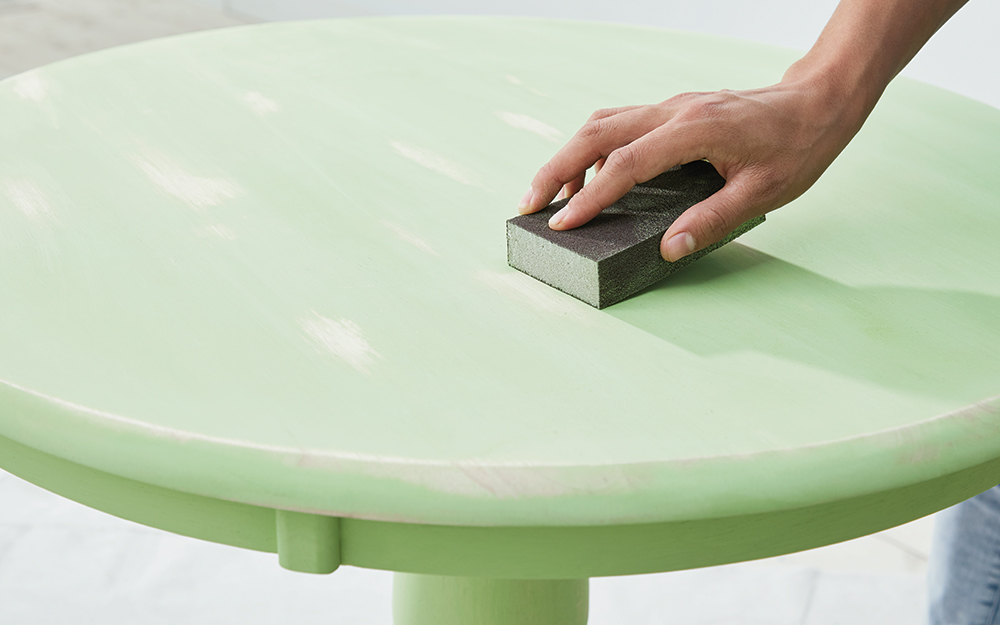
You can achieve different finishes with chalked paint by sanding your project piece once the paint has dried.
For a smooth finish, lightly sand the piece with a fine-grit sand sponge. Focus your sanding on any paint ridges or drips.
For a distressed look, sand more. Focus on areas like edges and footings that would naturally get more wear.
Seal With Wax
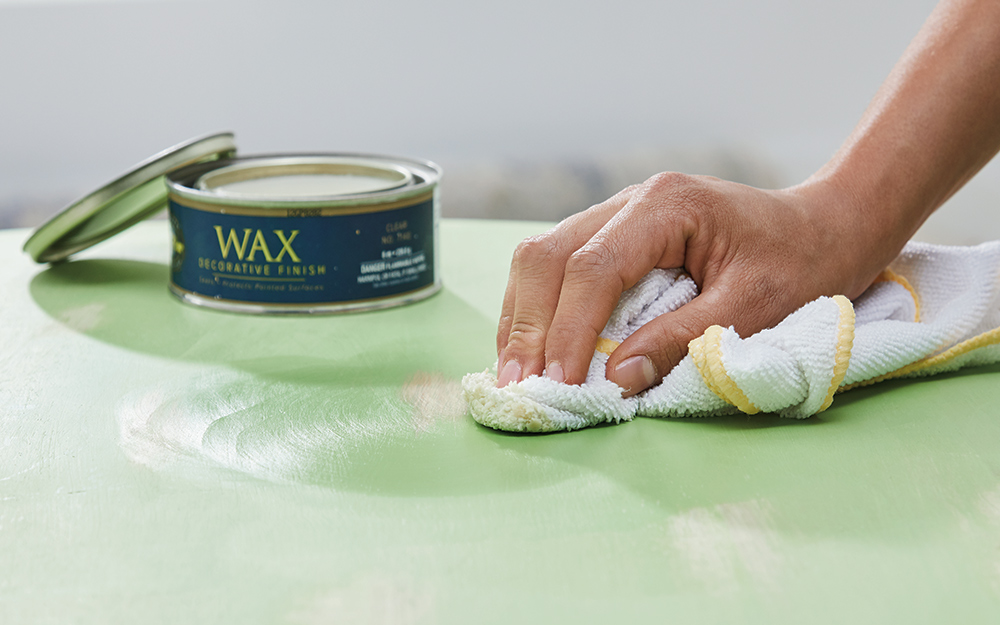
Chalked paint lacks the sealing properties of most standard paints. It requires wax to seal the color and keep the finish free from damage caused by water or debris.
- Wait for paint to dry completely.
- Use a separate brush for applying the wax to the painted surface.
- Choose between regular clear wax and dark wax. A dark wax darkens the color and makes the piece appear more aged.
- Apply one to two coats with a wax brush. Rub the wax into the paint with a soft, clean cloth and then buff the wax.
- Be prepared for the piece to take at least a day to fully dry after waxing.
The wax can take up to 30 days to fully cure to a hard, damage-resistant finish.
Mixing Your Own Chalked Paint
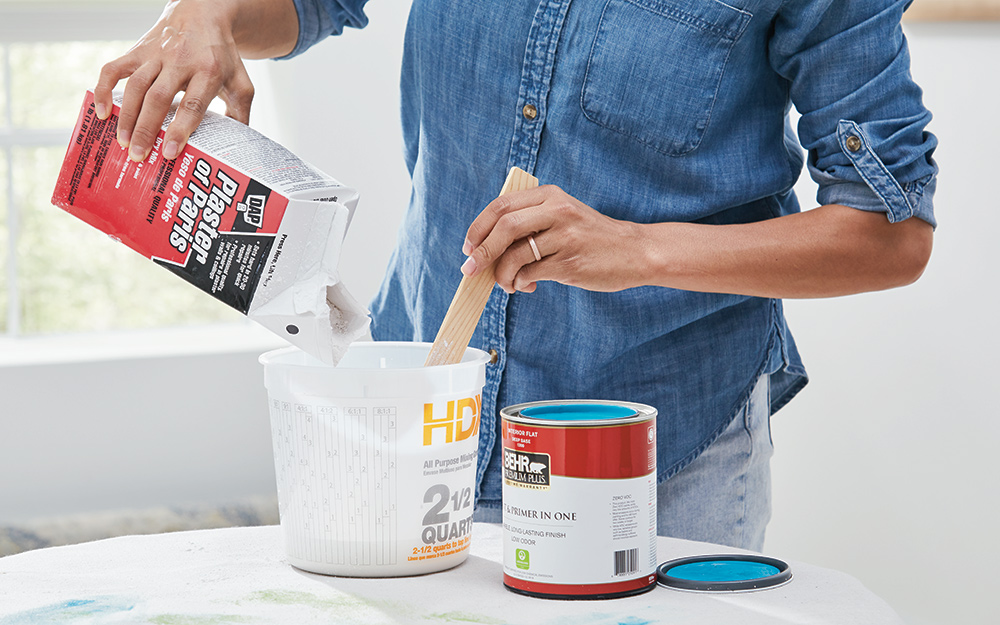
You can make your own chalked paint with leftover latex paint, water and plaster of Paris.
- Create a slurry using 1/3 cup of plaster of Paris with 1/3 cup of water.
- Stir well to ensure there are no lumps.
- Add your slurry to one cup of flat latex paint and thoroughly stir.
- This recipe makes enough chalked paint for one coat on a six-drawer dresser or similar-sized piece of furniture.
Making chalked paint is a good way to use up paint from an earlier project and limit waste. Stir your paint well before mixing with the plaster slurry. Most opened latex paints expire after five years. Unopened cans can last up to 10 years.
You can test your leftover paint to see if it’s good. Stir it well and paint in on a piece of cardboard using a paint brush. If it goes on smoothly, it should work to make chalked paint.
Remember that wall paint fades over time from sun exposure. So, if you’re trying to color-match a DIY project
with your wall color with old paint or paint formula, it may not be exactly the same.
Tip: Not all paints work on every surface. Check the label on the can to see if it will adhere to the item you want to paint.
Not to be confused with chalkboard paint, chalked paint can also be used on glass, fabric, metal and drywall. Learning how to use chalked paint can give new furniture a "shabby chic" look. You can also use chalked paint to give an old piece a fresh patina.
Ready to get the tools and materials for your chalked paint project? The Home Depot delivers online orders when and where you need them.



























